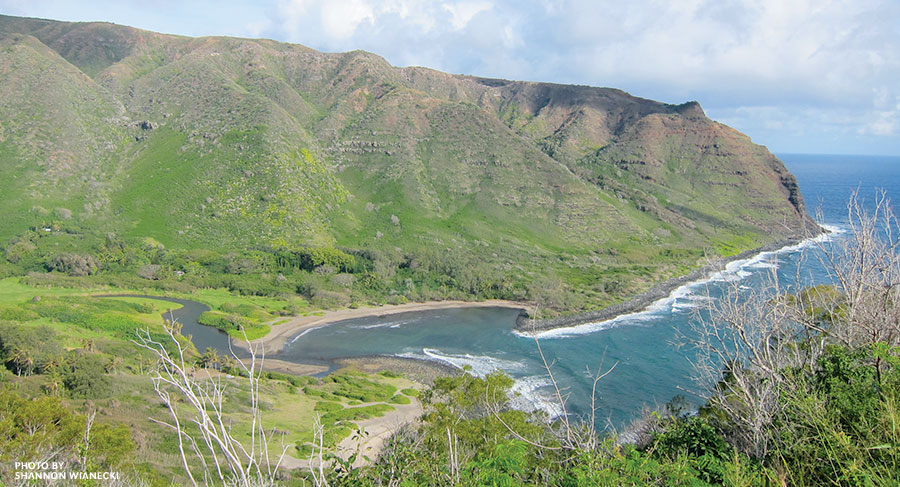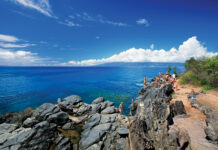
Only a handful of people live in Hālawa now, but the remote valley once contained a bustling community. Greg points to the ruins of a stone church, built in 1852, and the foundation of an elementary school, built in 1886. The school may be gone, but one of its star pupils sits beside us. Pilipo attended Hālawa School until the eighth grade. He’s the oldest original resident of the valley.
A few Canadian visitors arrive to join us for the hike. Greg leads us up to his family’s land, where we have the privilege of participating in a customary Hawaiian protocol. Greg blows a conch and chants in Hawaiian, requesting permission to enter. Pilipo responds in kind and greets each of us with a traditional honi — touching noses and inhaling. It’s an especially appropriate reception in Hālawa, which translates as hā (breath) and lawa (sufficient).
We follow Pilipo into a small room to learn more about the area’s fascinating history. Hālawa is among the oldest known settlements in the Hawaiian Islands. In 1975, Pilipo helped archeologist Patrick Kirch survey the valley’s numerous sites, including 1,222 lo‘i kalo (taro patches) and 24 heiau (temples). In ancient times, around 5,000 Hawaiians lived here. Thatched hale (houses) decorated the mountainside. People communicated with pū, conch shells, whose trumpeting calls ricocheted against the valley walls. The estuary was rich in marine life.
When Pilipo was young, taro patches filled the valley basin where forest stands today. There was a poi factory, a little pier, and car and foot bridges that crossed the stream. “The swinging bridges were known as the ‘hula bridges,’” Pilipo tells us, “because you danced when crossing them.” Auntie Harriet Ne taught him to dance real hula, and in turn he taught the famous kumu John Lake.
When Pilipo was six, life in Hālawa changed forever. On April 1, 1946, a tsunami tore through the valley. The weather at daybreak was beautiful, but the women walking to church saw the ocean receding strangely. They rang the bell and everyone evacuated up the mountain. Seawater surged into the valley. “The most frightening sounds were the trees cracking and boulders rolling when the water went back out,” says Pilipo, tearing up as he relives the memory. “My grandfather began wailing. The tidal wave exposed hundreds of bones from an ancient battle.”





